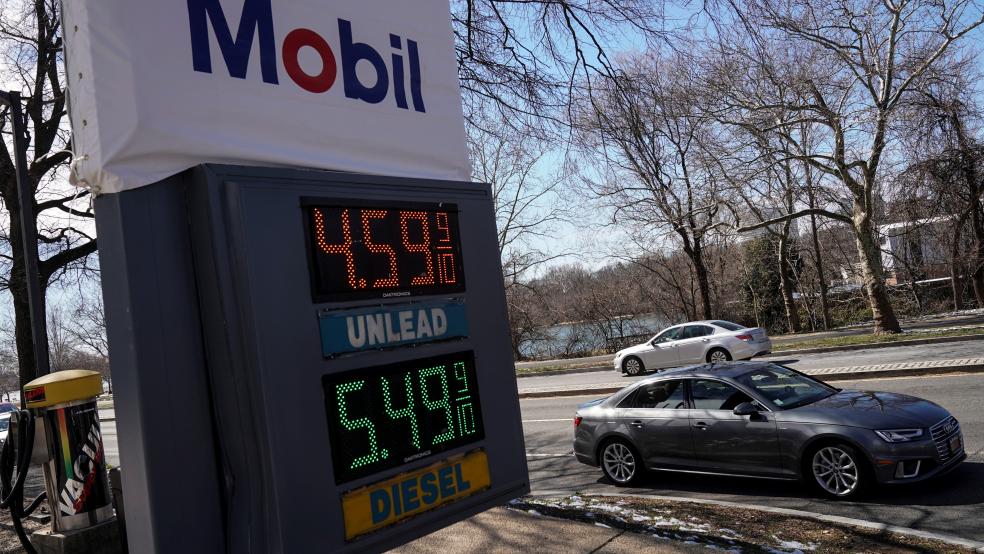The U.S. economy contracted by 0.4% in the first three months of 2022, for a growth rate of -1.4% on an annual basis, the Bureau of Economic Analysis announced Thursday, in what is the first negative GDP report since the early days of the pandemic two years ago.
While the report shows a sharp contrast with the preceding months, when the U.S. recorded strong growth, most economists are saying the negative results are not a cause for alarm.
“The report isn’t as worrisome as it looks,” writes Lydia Boussour of Oxford Economics. “Beneath the weak headline print, the details point to an economy with solid underlying strength that demonstrated resilience in the face of Omicron, lingering supply constraints and high inflation.”
Technical factors in play: In remarks at the White House, President Biden blamed “technical factors” for the downbeat numbers, and according to Bloomberg’s Jordan Fabian and Chris Anstey, he is basically correct.
“GDP in the first three months of this year was walloped by one of the biggest hits from trade in the post-World War II era,” Fabian and Anstey write. “That’s because American businesses and consumers bought a lot of foreign products, at a time when most other economies aren’t buying U.S. goods at the same pace.”
The increase in purchases of foreign goods is a sign of an extremely hot economy, says Joseph Brusuelas, chief economist at the consulting firm RSM. “Despite the 1.4% contraction, personal consumption up 2.7%. Investment increases 7.3% as activity in the real economy remains remarkably stout,” he writes. “To put it bluntly the economy is expanding at such a brisk pace that Americans turned to external sources to meet demand.”
Inflation takes a bite: Inflation also played a major role in the negative result. In non-inflation-adjusted terms, the economy grew by 1.6%, indicating that consumers and businesses spent more in the first quarter than the quarter before. But inflation ate away at the real value of those purchases, producing an inflation-adjusted decrease. (See the chart below for the big gap between real and nominal GDP growth.)
“The growing gap between what economists call ‘real’ (inflation-adjusted) and ‘nominal’ (unadjusted) growth reveals a lot about the complicated state of the U.S. economy,” says The New York Times’ Ben Casselman. “Demand for just about everything is exceptionally strong: Consumers want cars and houses and meals at restaurants; companies want workers and materials so they can sell them those things.”
Politically, though, the fact that inflation is so strong and persistent could prove to be a burden for Democrats. Senate Republican leader Mitch McConnell (R-KY) charged that “runaway inflation is crushing working American families on Democrats’ watch,” adding that his opponents have “thrown the recovery into reverse and we’re actually going backward.”
Recession still unlikely – for now: While a handful of analysts are predicting a recession – Deutsche Bank this week forecasted a “major recession” in the U.S. next year driven by Federal Reserve tightening – most say it’s too early to make any predictions. “Don’t panic. This is not the start of a recession,” Ian Shepherdson, chief economist at Pantheon Macroeconomics, wrote Thursday. “The weakness in GDP growth was due to wild components.”
Gus Faucher, chief economist at PNC, said in a note, “Although GDP fell in the first quarter, the U.S. economy is not in recession. Underlying demand remains strong, and the labor market is in excellent shape.”
Still, the report did increase worries about the Fed’s ability to deliver a soft landing as it attempts to bring down inflation. “When the Fed has to raise interest rates as far as they say they’re going to, recession risks are high,” Mark Zandi, chief economist at Moody’s Analytics, told The Washington Post. “There’s just no graceful way for the economic plane to land on the tarmac. It might land without crashing, but it’s going to be a scary ride.”
At the White House, Biden downplayed the threat of a downturn. “I’m not concerned about a recession,” he said. “No one is predicting a recession now. Some are predicting there may be a recession in 2023.”
Biden also called on lawmakers to take steps to help head off any burgeoning economic weakness by enacting his agenda. “Congress should send to my desk a bipartisan innovation bill to bolster our supply chains and make more in America,” he said. “And Congress needs to pass legislation to lower costs and lower the deficit …”
But interest rate hikes are more likely than ever: “For those who think this data will cause policymakers at the Federal Reserve to hesitate on their plans to push the policy rate well above the terminal rate of 2.5% by the end of the year, think again,” Brusuelas writes. “First-quarter growth data underscores that policy direction and will most likely add to the urgency at the central bank to move decisively.”




